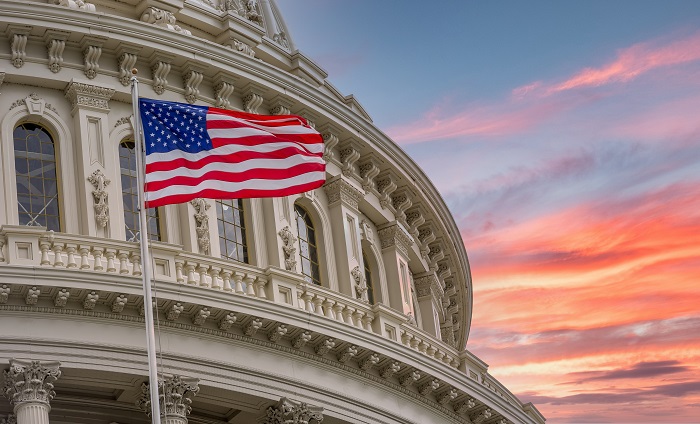Recently, Representative Frank Lucas (R-OK) introduced the National Drone and Advanced Air Mobility Initiative Act. The legislation aims “(T)o provide for a coordinated Federal initiative to accelerate unmanned aircraft systems civilian and advanced air mobility research and development for economic and national security, and for other purposes.”
According to a press release from the Committee on Science, Space, and Technology, the bill’s objectives include the authorization of a Network of Drone and Advanced Air Mobility Research Institutes, workforce expansion to integrate UAS across all sectors of the economy, the creation of a counter-UAS center of excellence to improve response to threats from adversaries using uncrewed systems, and more.
Last month, Joshua Levine, a Technology and Innovation Policy Analyst at the American Action Forum, explored the bill’s provisions in an article on his organization’s website. Commercial UAV News spoke with Levine to learn more about the pros, cons, and potential impact of the National Drone and Advanced Air Mobility Initiative Act.
Commercial UAV News: Before we start talking about the bill, please tell us about the American Action Forum.
Levine: The American Action Forum is a 501(c)(3) think tank that provides a data driven, economic policy-focused approach to federal legislation. Our aim is to provide lawmakers with an in-depth, market-based analysis on any issues or questions they have regarding legislation or regulation. I'm a policy analyst on the technology and innovation team. My work runs the gamut from things like drones and low-Earth orbiting satellites to content moderation to kids’ online safety, and, increasingly, to artificial intelligence.
Commercial UAV News: Over the past few months, a number of bills have been introduced aimed at advancing UAV and AAM technology in the US, including a bill to reauthorize UAS test sites and increase R&D and a bill to revamp the process for acquiring BVLOS waivers from the FAA. How does the National Drone and Advanced Air Mobility Initiative Act fit into these efforts to move the technology forward?
Levine: The thrust of this bill is to promote domestic manufacturing and promote more research and development of drones. I'm excited about the interest in the federal government to tackle some of the barriers to commercialization that we've seen. I like the idea of having a group within the federal government to “quarterback” collaboration between agencies and manage investments to ensure that funds are being spent properly and that we have a clear roadmap of where we're going and what the federal government should be doing to help promote adoption and commercialization—and where private sector should be left to innovate. I also think more general R&D funding and funding to universities is exciting.
Commercial UAV News: In your piece, you present the pros and cons of the bill. As one of the “cons,” you say that the bill “does not address continued shortcomings with the FAA and Beyond Visual Line of Sight (BVLOS) guidelines.” How should these shortcomings be addressed? How can the FAA improve BVLOS guidelines while ensuring safety?
Levine: Some of the ARC reports and the GAO report that went out in early 2023 looked at the shortcomings of the FAA approach to providing the BVLOS rules. They saw that there were inconsistencies in the way they were tracking progress. They didn't have a clear idea of how to evaluate success. So, what does success look like? There have been three or four reports now on BVLOS, and you've had stakeholders come back and say that we haven't done enough on actually operationalizing what we need to be doing. We have metrics that were provided in the last ARC report that talk about acceptable levels of risk, and I think on those lower levels of acceptable risk we should be moving faster than we are right now. I understand that concerns about safety are going to drive this, and that's really important, not only economically but in terms of public trust, but I do think that the FAA could be doing more to accelerate this process, and there are a lot of other folks who are saying same thing.
Commercial UAV News: In your piece, you also said that this bill could help build a talent pipeline for both drones and AAM. How could this bill make that happen?
Levine: The way this bill is framed is as an opportunity to combat Chinese drone dominance, and there are a lot of really exciting American companies making big innovations in the industry. There are also exciting Canadian, Israeli, South Korean, and Japanese companies. We have all these Western liberal democracies that are committed to free markets and open ideas and who have potentially flourishing industries and expertise. So, making them a part of our strategy is imperative. When we talk about building up our own capabilities, building our allies’ capabilities is just as important; being able to have that technical and informational exchange, between countries, parties, organizations, and individuals. I think making some of the funding opportunities and research opportunities available to foreign companies, as well as foreign researchers, can go a long way to doing that.
Commercial UAV News: Another point that you bring up in your piece is the danger of government agencies picking winners or losers in this market. What is there in this bill that makes this a red flag for you?
Levine: Within the bill, provisions over funding, specifically looking at what types of organizations qualify for funding, are pretty broad. They ask people to take into consideration things such as geographic diversity and things such as new entrants and startups and domestic sourcing of materials. I want to support new entrants and startups, but the way to do that is by having clear regulatory frameworks and having low barriers to entry. Lawmakers need specific metrics to factor in when they’re thinking about designating funding, because if you're going to put funding toward something, we need to make sure it's in an environment where it's going to thrive and not be held up by red tape.















Comments